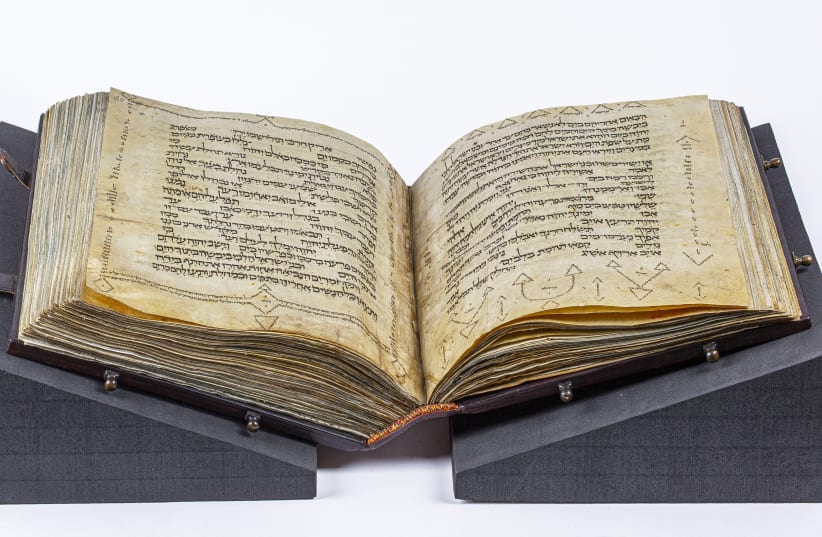The world's oldest and most complete Hebrew Bible will go on display in London next week before an auction in May where it could sell for up to $50 million, Sotheby's said on Wednesday.
If the 1,000-year-old holy book sells for near its estimated value, the Codex Sassoon would become the most valuable printed text or historical document ever sold at auction, Sotheby's said.
Billionaire investor Kenneth Griffin set the record in 2021 when he paid $43.2 million at a Sotheby's auction for a first-edition copy of the US Constitution.
The Codex Sassoon is named after previous owner David Solomon Sassoon, who acquired the Bible in 1929 and assembled one of the most significant private collections of Judaica and Hebraica manuscripts in the 20th century. The document offers a critical link bridging Jewish oral tradition to the modern Hebrew Bible.
It was not until recently that the current owner, collector Jacqui Safra, had the Codex Sassoon carbon dated, confirming it was older than the Aleppo Codex and the Leningrad Codex, two other major early Hebrew Bibles, according to Sotheby's.
Sotheby's said the Codex Sassoon had been dated to either the late 9th or early 10th century on both scientific and paleographic grounds and contains almost the entirety of the Bible. The oldest copies of Biblical text ever found were the Dead Sea Scrolls which were discovered in caves in 1947.
Available for public viewing for the first time in 40 years
The codex, or manuscript in book form, will be available for public viewing for the first time in 40 years next week at Sotheby’s London and will then go on exhibition in Tel Aviv, Dallas, Los Angeles and finally New York in May.
The Hebrew Bible contains 24 separate books organized into three parts — the Pentateuch, the Prophets and the Writings. Starting with the book of Genesis and ending with Chronicles, the Hebrew Bible is foundational to Judaism, as well as Christianity and Islam.
“It’s electrifying,” Sotheby's senior Judaica consultant Sharon Liberman Mintz told The New York Times. “This represents the first time the text appears in the form where we can really read and understand it.”

